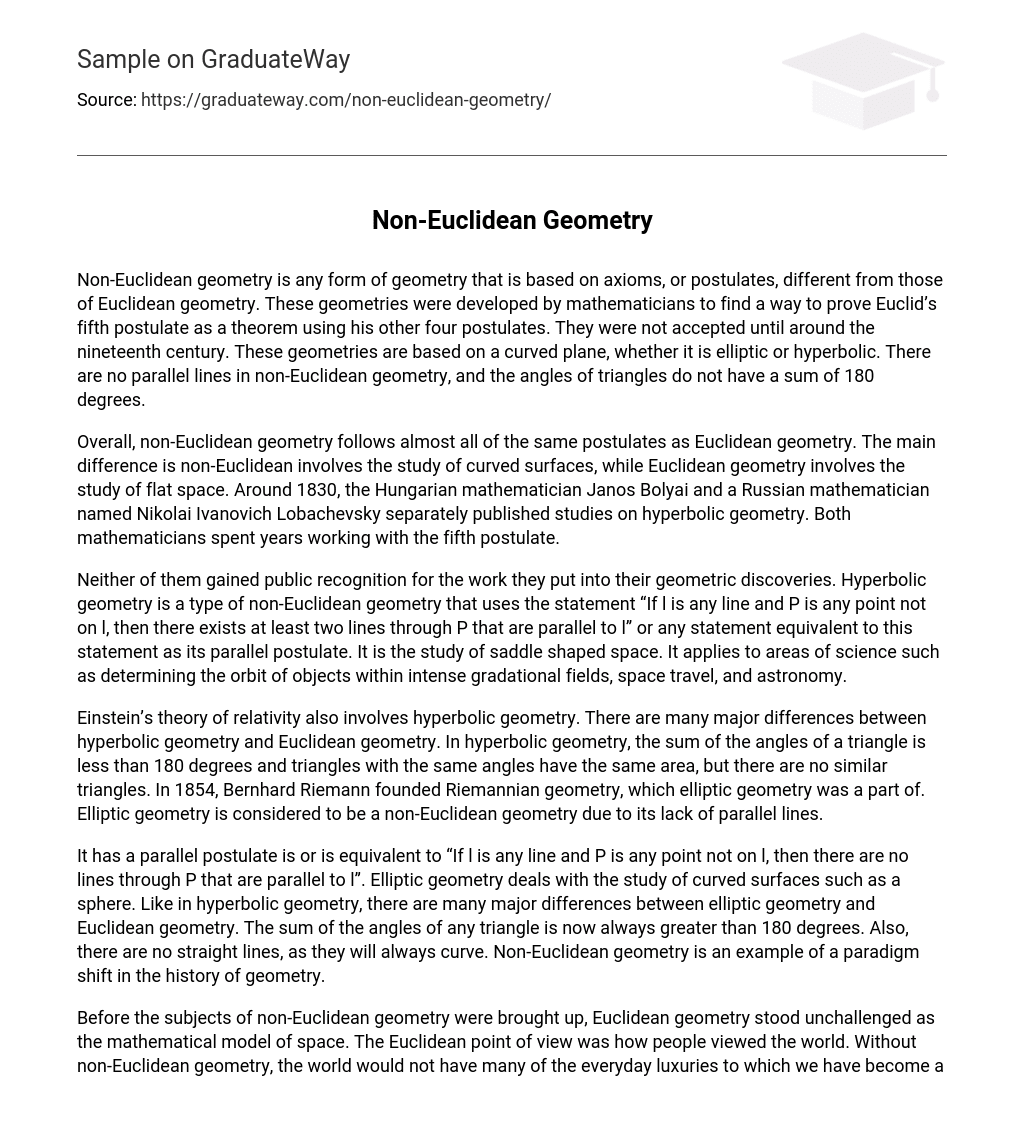Non-Euclidean geometry is a set of geometric systems that utilize axioms or postulates that differ from those in Euclidean geometry. Mathematicians formulated these geometries to demonstrate Euclid’s fifth postulate as a theorem, while preserving his other four postulates. While non-Euclidean geometries were not widely embraced until the 19th century, they are founded on a curved plane, specifically elliptic or hyperbolic. These geometries lack parallel lines and do not conform to the rule that triangle angles sum up to 180 degrees.
Non-Euclidean geometry, which examines curved surfaces, has many similarities with Euclidean geometry. However, the main difference is that Euclidean geometry focuses on flat space. In the 19th century, Janos Bolyai from Hungary and Nikolai Ivanovich Lobachevsky from Russia independently explored hyperbolic geometry and extensively researched the fifth postulate.
Both of them did not receive public recognition for their efforts in discovering geometric concepts. Hyperbolic geometry, a form of non-Euclidean geometry, incorporates the parallel postulate “If l is any line and P is any point not on l, then there exists at least two lines through P that are parallel to l” or any equivalent statement. This branch of mathematics focuses on the exploration of saddle shaped space and is applicable in various scientific fields including the calculation of object orbits in strong gravitational fields, space exploration, and astronomy.
Einstein’s theory of relativity introduced hyperbolic geometry, a type of non-Euclidean geometry that differs from Euclidean geometry. Hyperbolic geometry possesses distinct traits: the total of angles in a triangle is smaller than 180 degrees, triangles with equal angles have equivalent areas, and similar triangles are nonexistent. In 1854, Bernhard Riemann established Riemannian geometry, which encompasses elliptic geometry – another example of non-Euclidean geometry where parallel lines do not exist.
Elliptic geometry, which studies curved surfaces like spheres, is characterized by a parallel postulate. This postulate states that “If l is any line and P is any point not on l, then there are no lines through P that are parallel to l.” Unlike Euclidean and hyperbolic geometries, elliptic geometry differs greatly. In this type of geometry, the sum of angles in any triangle always exceeds 180 degrees, and straight lines do not exist; instead, they consistently exhibit curvature. Consequently, non-Euclidean geometry represents a significant departure from traditional geometric principles.
Non-Euclidean geometry, a necessary departure from the previously dominant Euclidean geometry, plays a vital role in numerous everyday conveniences. Its absence would render precise satellite placement in Earth’s orbit unattainable, thereby impeding our access to crucial digital entertainment and communication devices that have become fundamental in modern life.
Non-Euclidean geometry has greatly impacted our society, allowing for important progress such as the ability to send astronauts into space and create rockets that can escape Earth’s gravitational force. Sources: http://regentsprep.org/Regents/math/geometry/GG1/Euclidean.htm http://noneuclidean.tripod.com/history.html





